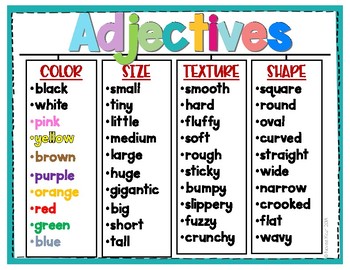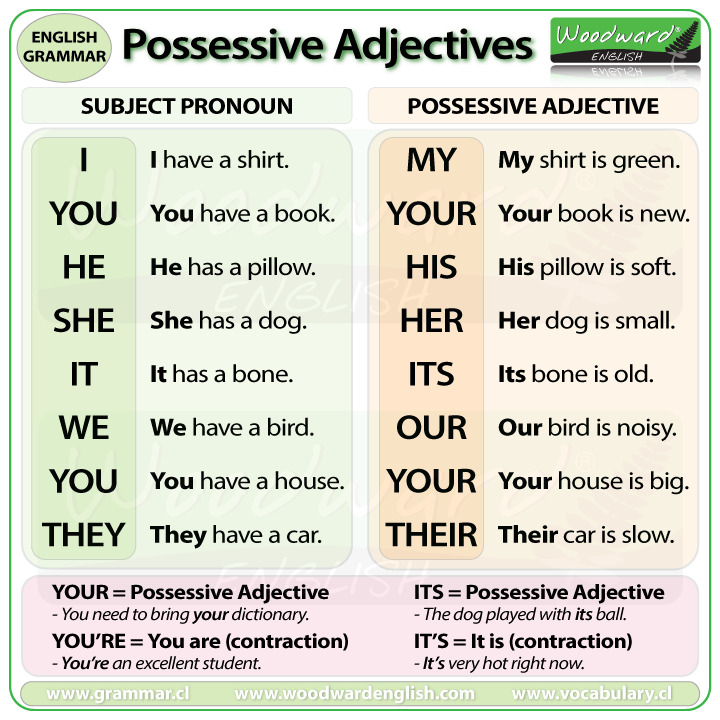TYPE OF ADJECTIVES
Qualitative adjectives
1. Adjectives are use to describe nouns, they give more details or information about them.
a) Tell me about your friend. b) Well, he is tall, dark, and handsome.
(Háblame sobre tu amigo) (Bueno, el es alto, moreno y guapo).
(Háblame sobre tu amigo) (Bueno, el es alto, moreno y guapo).
2. Adjectives comes before the nouns they modify (no after).
Three happy hippies lived in the Heartquake Hotel.
(Tres felices hippies vivieron en el Hotel Heartquake)
(Tres felices hippies vivieron en el Hotel Heartquake)
3. Adjectives can also be used with linking verbs to describe the subject of a sentence. When used in this manner, the adjective(s) come after the linking verb.
My mother is tall and slender.
(Mi mamá es alta y delgada)
(Mi mamá es alta y delgada)
THE GOOD NEWS IS THAT IN ENGLISH THE FORM OF AN ADJECTIVE DOES NOT CHANGE. IT MEANS THEY ARE FEMALE OR MALE, PLURAL OR SINGULAR.
4. Some adjectives give us factual information about the noun- age, size, colour, etc. (fact adjectives). I have a new car, it is small and gray.
(Yo tengo un auto nuevo, es pequeño y gris)
5. Some adjectives show what somebody thinks about something or somebody- nice, horrid, beautiful, et. (opinion adjectives). The goverment is making wrong and bad decisions about the pandemic.
(El gobierno esta tomando equivocadas y malas decisiones respecto a la pandemia).
(El gobierno esta tomando equivocadas y malas decisiones respecto a la pandemia).
Qualitative Adjectives: are those ones which can describe quality of living beings or non-living things.
COLOR: blue, red, green, brown, yellow, black, white, ..
e.g. My blue bag. (Mi bolsa azul)
e.g. My blue bag. (Mi bolsa azul)
OPINION: good, pretty, right, wrong, funny, light, happy, sad...
e.g. He was a silly boy. (El fue un chico tonto)
e.g. He was a silly boy. (El fue un chico tonto)
SIZE: tall, short, big, small, little, long, same, as,...
e.g. The tall man. (El hombre alto)
e.g. The tall man. (El hombre alto)
AGE: young, old, modern, middle age, ancient, ...
e,g, The young woman was sitting. (La mujer joven estaba sentada)
e,g, The young woman was sitting. (La mujer joven estaba sentada)
SHAPE: round, triangular, rectangular, square, oval, ...
e.g. They were square boxes. (Esas eran cajas cuadradas)
e.g. They were square boxes. (Esas eran cajas cuadradas)
ORIGIN: Germany, French, Mexican, American, Chinese, ...
e.g. This is the German flag. (Esta es la bandera alemana)
e.g. This is the German flag. (Esta es la bandera alemana)
MATERIAL: glass, metal, wood, cotton, gold, silk, silver, wax, denim, ...
e.g. The wooden cupboards. (Las alacenas de madera)
e.g. The wooden cupboards. (Las alacenas de madera)
DISTANCE: long, short, far, around, high, low, ...
e.g. They went for lots of long walks. (Ellos tuvieron muchas caminatas largas)
e.g. They went for lots of long walks. (Ellos tuvieron muchas caminatas largas)
TEMPERATURE: cold, warm, hot, cool, ...
e.g. We eat icecreams on hot days. (Comemos helados en días calurosos)
e.g. We eat icecreams on hot days. (Comemos helados en días calurosos)
TIME: late, early,...
e.g. My early motherhood started when I was 15.
(Mi temprana maternidad inició cuando yo tenía 15)
e.g. My early motherhood started when I was 15.
(Mi temprana maternidad inició cuando yo tenía 15)
Possessive adjectives
1. Possessive adjectives are used to show possession or ownership of something.
2. They are used in singular or plural in the same way.
My car is gray. (singular)
(Mi auto es gris)
My cars are gray. (plural)
(Mis autos son grises)
Your mother is a doctor. (singular)
(Tu madre es doctora)
Your father is a doctor. (singular)
(Tu padre es doctor)
Your parents are doctors. (plural)
(Tus padres son doctores)
3. We used them before a noun.
Demostrative Adjectives
1. They are used before a noun.
2. THIS and THAT are singular, and THESE and THOSE are plural.
3. THIS and THESE show proximity; and THAT and THOSE show distance.
e.g. This is my sister. (singular / proximity)
(Esta es mi hermana)
e.g. These are my sisters. (Plural /proximity)
(Estas son mis hermanas)
e.g. That is my sister. (singular / distance)
(Esa/ aquella es mi hermana)
e.g. Those are my sisters. (plural / distance)
(Esas/ aquellas son mis hermanas)



No hay comentarios.:
Publicar un comentario
THANK YOU FOR YOUR COMMENT